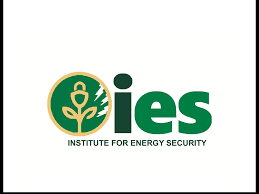Special topics
 Fuel prices will go up marginally in the next pricing-window, the Institute for Energy Security has predicted.
Fuel prices will go up marginally in the next pricing-window, the Institute for Energy Security has predicted.
According to IES, an increase in the price of Brent Crude on the world market and the depreciation of the local currency are the main factors affecting the hike.
“The increases in Brent Crude price as well as finished products and the depreciation of the Cedi do not present positive news for the petroleum consumer,” IES said in a statement.
It added: “Guided by the fundamentals in pricing petroleum products, the Institute for Energy Security (IES) foresees fuel prices recording slight increases on the local market. As has been done in the last two previous pricing-windows, the National Petroleum Authority (NPA) still has the option of standardizing prices at the pump with the Price Stabilization and Recovery Levy. “
Below is the full statement:
FUEL PRICES MAY RISE MARGINALLY
REVIEW OF MAY 2018 FIRST PRICING-WINDOW
Local Fuel Market Performance
For the third consecutive pricing-windows, petroleum consumers heaved a sigh of relief as prices at the pump remained largely unchanged.
With Brent crude and finished products rising on the international fuel market, consumers have had to budget and pay same amount to procure petroleum products due to the National Petroleum Authority’s (NPA’s) intervention with the Price Stabilization and Recovery Levy.
On the average, Gasoline and Gasoil could be sold to you at Ghs 4.57 and Ghs 4.56 respectively on the local market. IES Market-Scan shows Zen Petroleum continue to lead the market with the cheapest Gasoline and Gasoil, followed by Benab Oil, Pacific, Lucky Oil and Frimps Oil.
World Oil Market Prices
Brent crude price continues to soar on the international fuel market, moving from $73.01 per barrel to close trading at $75.12 per barrel, as happenings in the geopolitical space especially likely US sanctions on Iran continues to push crude prices upwards.
Today, Brent crude is trading at $78.92 per barrel, with Goldman Sachs projecting Brent could trade at $82.5 per barrel by summer.
According to Standard and Poor’s Global Platts benchmark, Gasoline moved up by 2.55% to close trading at $712.68 per metric tonne, from a previous average of $694.93 per metric tonne. Gasoil also moved up by 1.88%, closing at $656.68 per metric tonne from $644.57 per metric tonne.
Local Forex and Fuel Stock
Within the period under review, data gathered by IES Economic desk suggests the Ghana Cedi depreciated against the U.S. Dollar, from a previous trading average of Ghs 4.50 to close the window at Ghs 4.56, representing a drop drop of 1.33 percent. From May 1, 2018 to date, total petroleum imports stand at 231,650 metric tonnes; 95,9650 metric tonnes of Gasoline, 68,500 metric tonnes of Gasoil, 10,000 metric tonnes of Jet Fuel (ATK) and 7,500 metric tonnes of Butane (LPG).
PROJECTIONS FOR MAY 2018 SECOND PRICING-WINDOW
The increases in Brent Crude price as well as finished products and the depreciation of the Cedi do not present positive news for the petroleum consumer.
Guided by the fundamentals in pricing petroleum products, the Institute for Energy Security (IES) foresees fuel prices recording slight increases on the local market. As has been done in the last two previous pricing-windows, the National Petroleum Authority (NPA) still has the option of standardizing prices at the pump with the Price Stabilization and Recovery Levy.
Competition among OMCs for market share may keep prices stable at the pump.